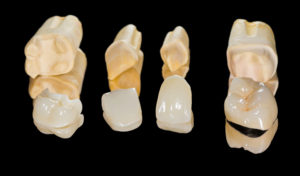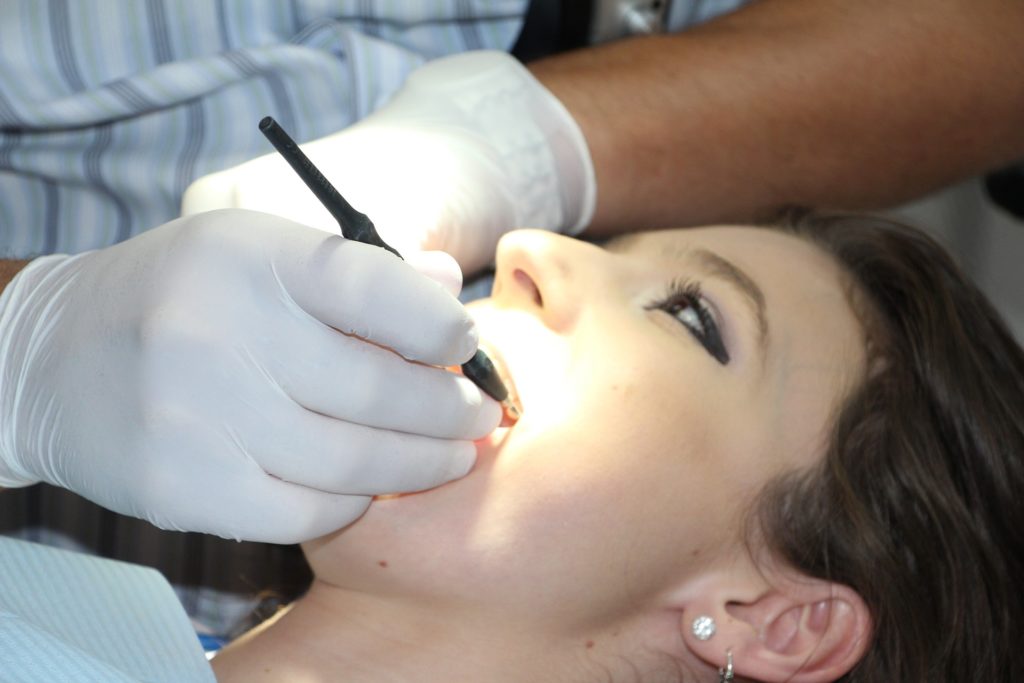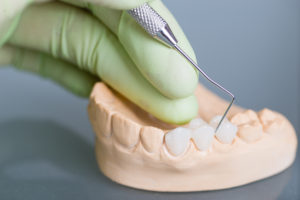Want the royal treatment? Visit the dentist.
As dentists, we know…our office isn’t the kind of place you visit just for the fun of it.
Even though the atmosphere is welcoming, the team is friendly, and the doctors are highly skilled professionals, our patients come here because they want to maintain good oral health and strong, beautiful teeth.
That’s why our restorative dentistry services are so important.
At Sunnyside, we are focused on ensuring that every one of our patients has a healthy mouth and a reason to smile.
Our dentists employ a variety of cutting-edge restorative treatments to address our patients’ varied concerns: gum or bone disease, broken or missing teeth, extensive wear or decay. Among the procedures we regularly use, crowns and bridges remain important oral care solutions. But what are they?
Crowns
As the name implies, the crown is the top, enamel-covered portion (the part exposed above the gum line) of any tooth. It’s like the toque of the tooth!
 The anatomical crown is the naturally-occurring tooth cap. In a perfect world, we would all keep our original anatomical crowns for our entire lives. With advances in technology and durable materials, however, artificial crowns do an excellent job of protecting teeth from damage and helping to maintain whole-mouth health when a filling would not be sufficient. Crowns are also used in cosmetic dentistry, usually to correct undersized or misshapen teeth.
The anatomical crown is the naturally-occurring tooth cap. In a perfect world, we would all keep our original anatomical crowns for our entire lives. With advances in technology and durable materials, however, artificial crowns do an excellent job of protecting teeth from damage and helping to maintain whole-mouth health when a filling would not be sufficient. Crowns are also used in cosmetic dentistry, usually to correct undersized or misshapen teeth.
Getting an artificial crown is not complicated. Indeed, it’s one of the most common restorative dental procedures we perform on our Kelowna office.
Modern artificial crowns are fabricated in a lab, usually built from impressions of a patient’s existing teeth (or an accurate facsimile thereof). At Sunnyside, we use our innovative iTero digital laser scanner to get an exact 3-D virtual impression of the patient’s mouth with no goopy mess. The crowns are most often made of a stain-resistant and exceptionally strong porcelain-metal composite (although they are still sometimes cast exclusively from metal –a true golden corona!). Our Sunnyside dentists choose a ceramic-Zirconia fusion. This robust material can be colored to exactly match the patient’s existing teeth, and the results are indistinguishable from “real” enamel.
Once the crown is ready to be applied, the dentist will shave down the existing enamel; the extent of this reduction is determined by the problem being treated. Some cavities or breaks can be very deep (like a root canal), which means the dentist will retain only the minimal amount of natural tooth material required to hold the crown. In other cases, such as abutment crowns (used to hold in a prosthesis), the dentist will only remove a thin layer of the tooth to be capped. The crown will be precision-fitted to ensure a comfortable and seamless fit, and it will then be bonded with a durable dental adhesive.
Recovery from this procedure is very quick, and once applied, a crown will be just as efficient as your original tooth. (To avoid future damage, however, crown recipients should avoid cracking walnut shells with their mouths! But then, everyone should avoid cracking walnut shells with their mouths…)
Even in this day and age, there are occasions where a tooth cannot be capped, and needs to be removed. In those instances, modern dentistry offers a few different prosthodontic alternatives. Partial dentures, clear aligners with built-in false teeth, implants, and bridges are all common tooth replacements.
Most dentists prefer to use implants for their stability and longevity, but implants can be prohibitively expensive, and also require a significant amount of preparation time and full oral surgery. Not every patient is a candidate for implants –mainly due to potential complications from surgery or certain chronic illnesses. In these cases, a bridge is a very good option.
Bridges
A dental bridge is a commonly-used dental prosthesis designed to secure false teeth.
In the past, bridges were routinely used to replace individual teeth. They are a cost-effective, minimally-invasive, and aesthetic alternative to implants. Recent advances in oral surgical techniques (including bone regrowth therapies and modern anaesthesia and antibiotics) have made implants accessible to a wider patient population, but the bridge-and-crown system is still very common.
Like a crown (or any false tooth), a bridge is created in a lab using a tooth-coloured composite resin or porcelain and metal material. We use the same ceramic and Zirconia that we use in our regular crown treatments.
A bridge requires healthy teeth on either side of the gap. The false tooth (or sometimes more than one tooth) is suspended between two fixed crowns. The dentist will prepare your mouth for the bridge by shaving down the two healthy adjacent teeth (the above-mentioned abutment crowns). The “end caps” will be fitted and secured to these two teeth, creating a strong and stable scaffolding for the false tooth, which will fit snugly into the gap. Once the dental cement has cured, the bridge will be permanently attached and will function just as natural teeth would.
Bridges are an easy and popular solution for tooth replacement, and an efficient way of protecting the teeth and jaw from further trauma.
Building bridges is an important skill in every aspect of life, even your oral health. And (we may be biased, but) at Sunnyside we believe that everyone –commoners and nobles alike– looks good wearing a crown!
Ensure your mouth is “engineered” to last a lifetime. Ask the dentists at Sunnyside about your best options for tooth restoration.
Contact our office for a consultation.



